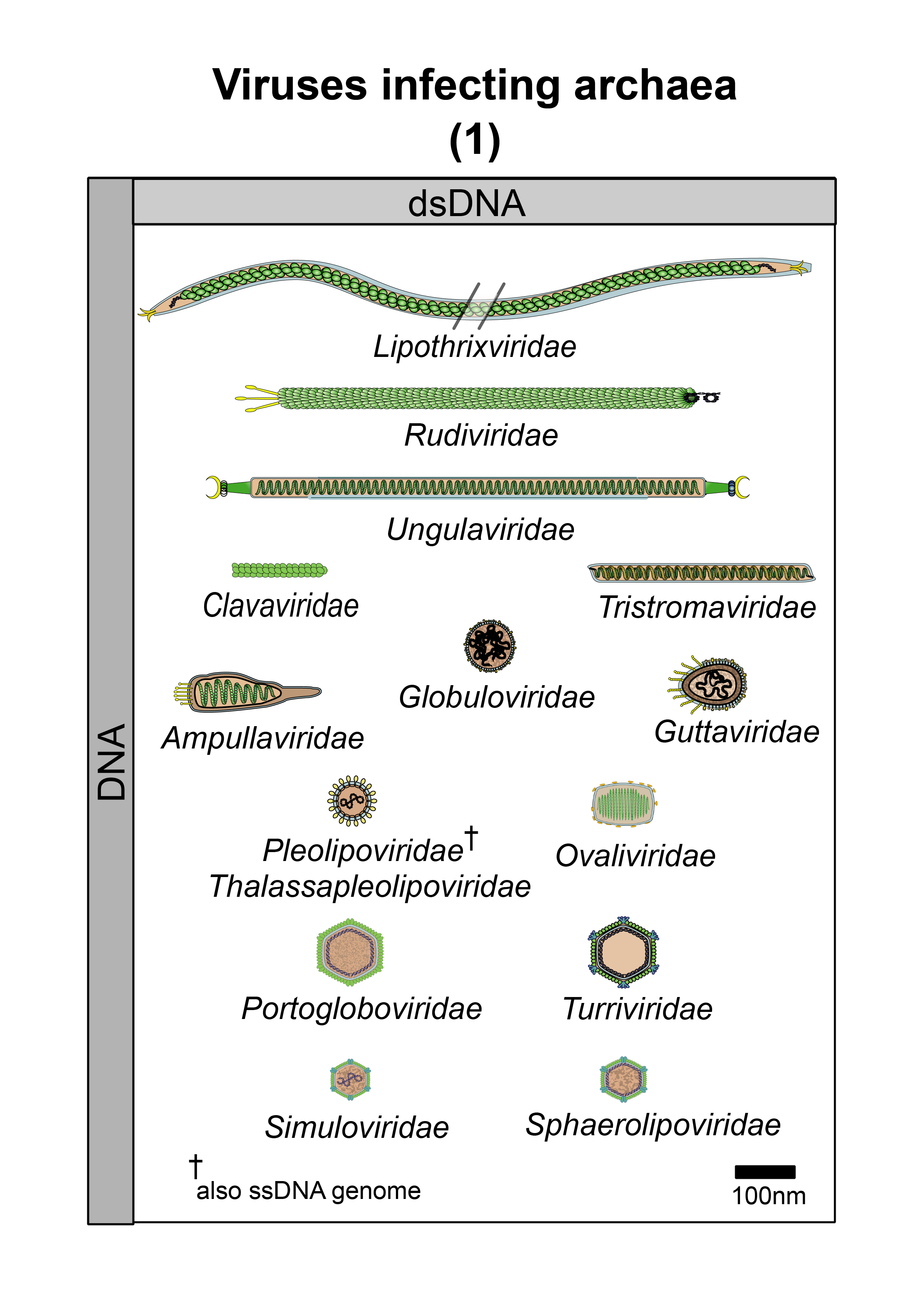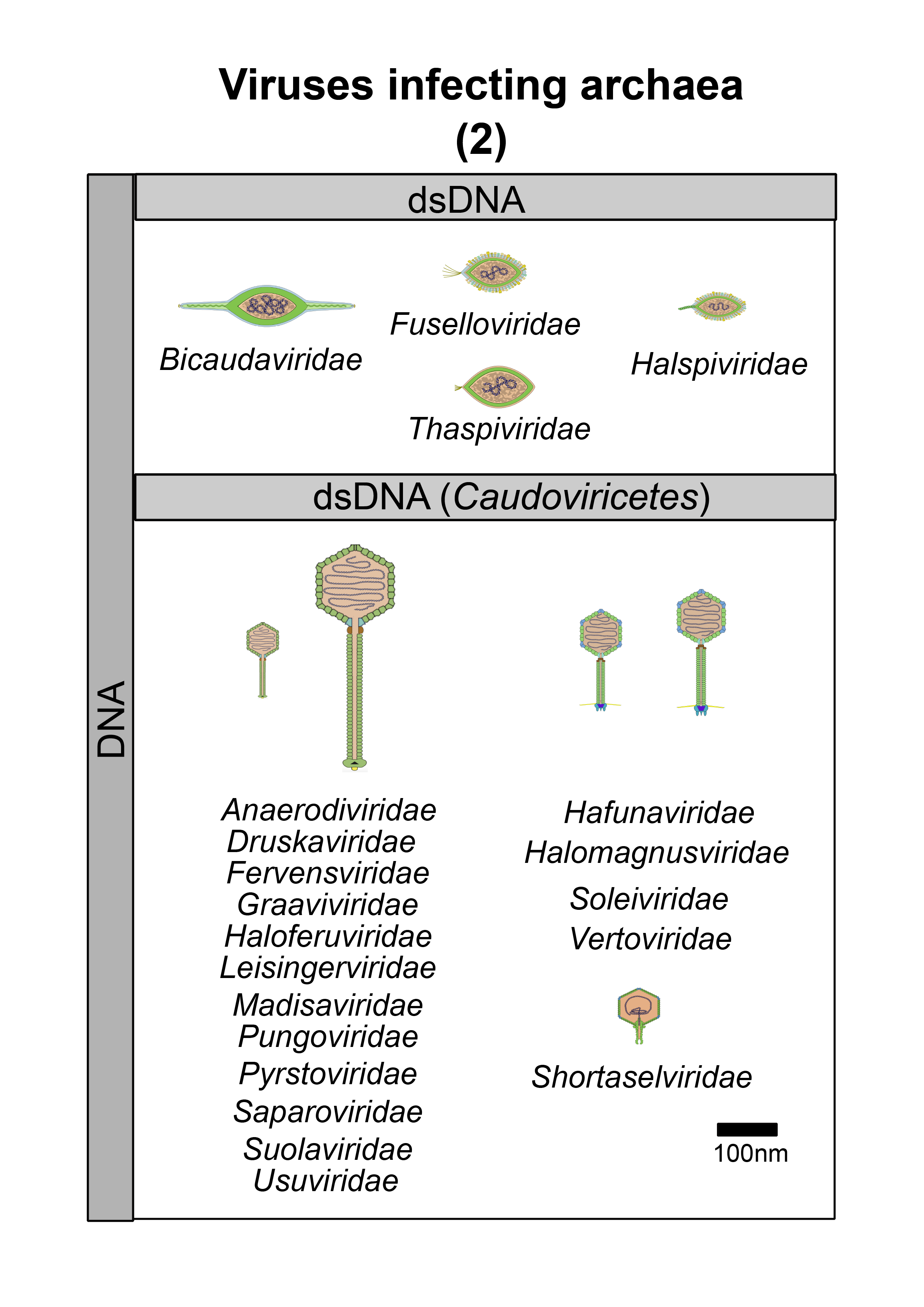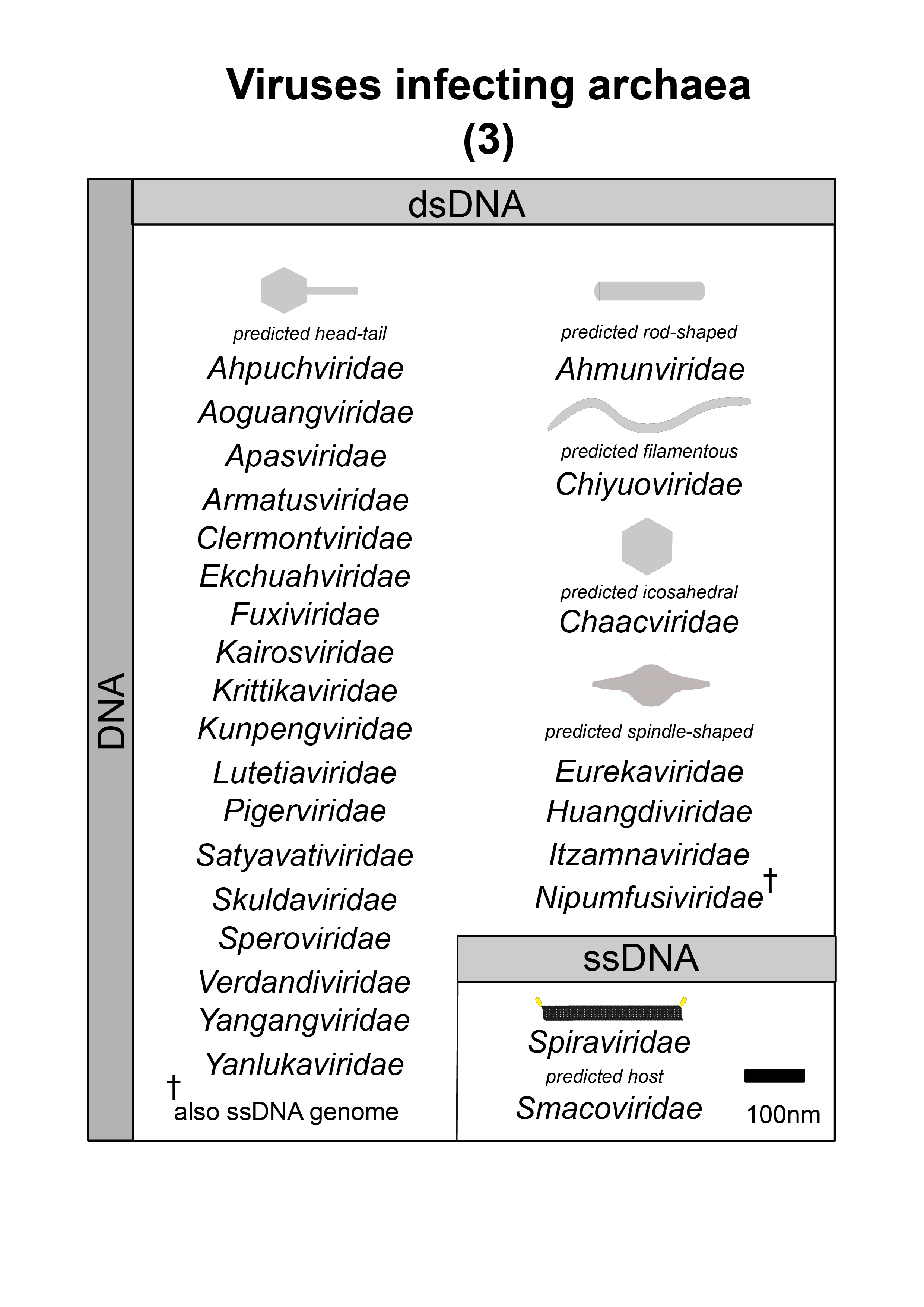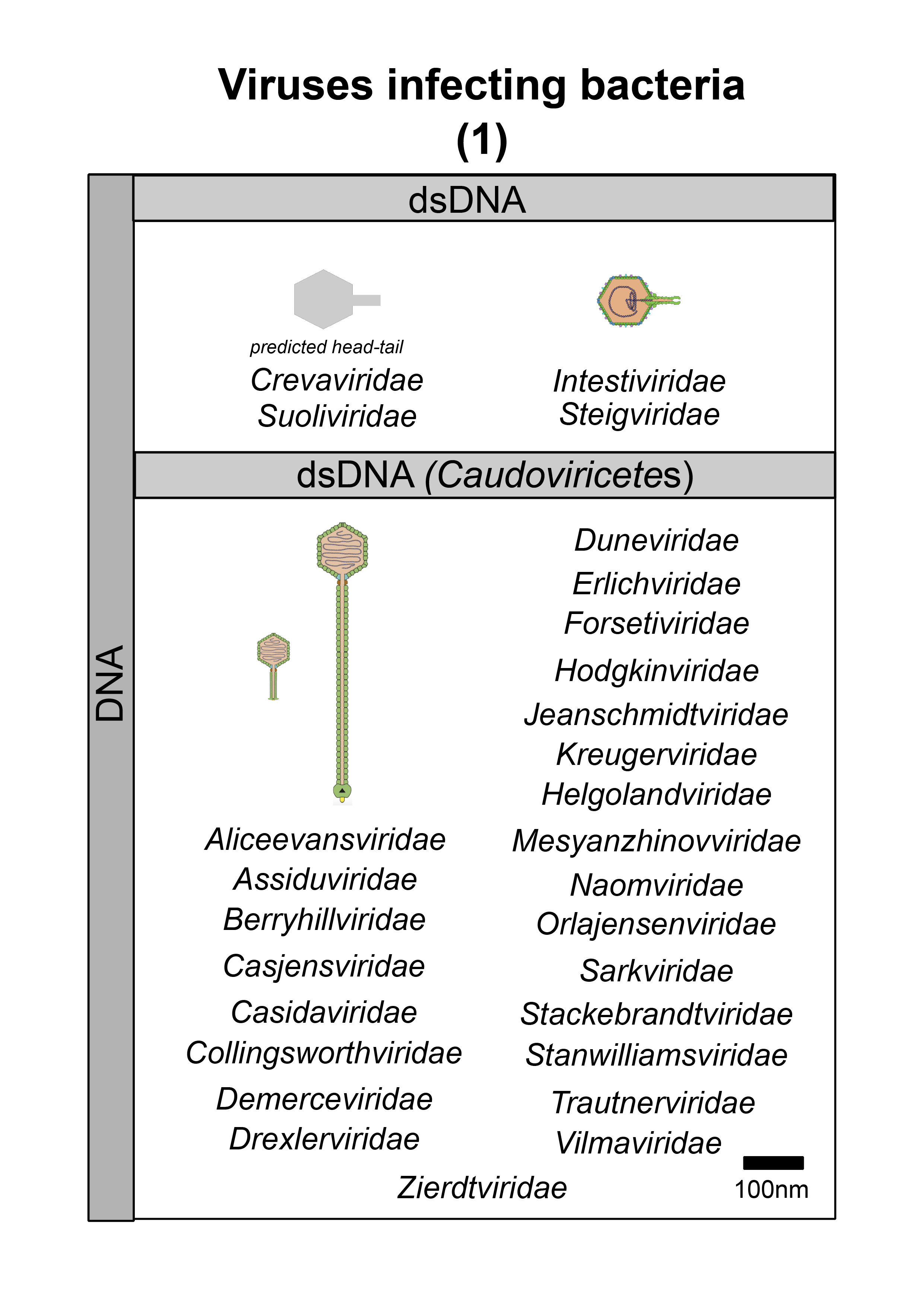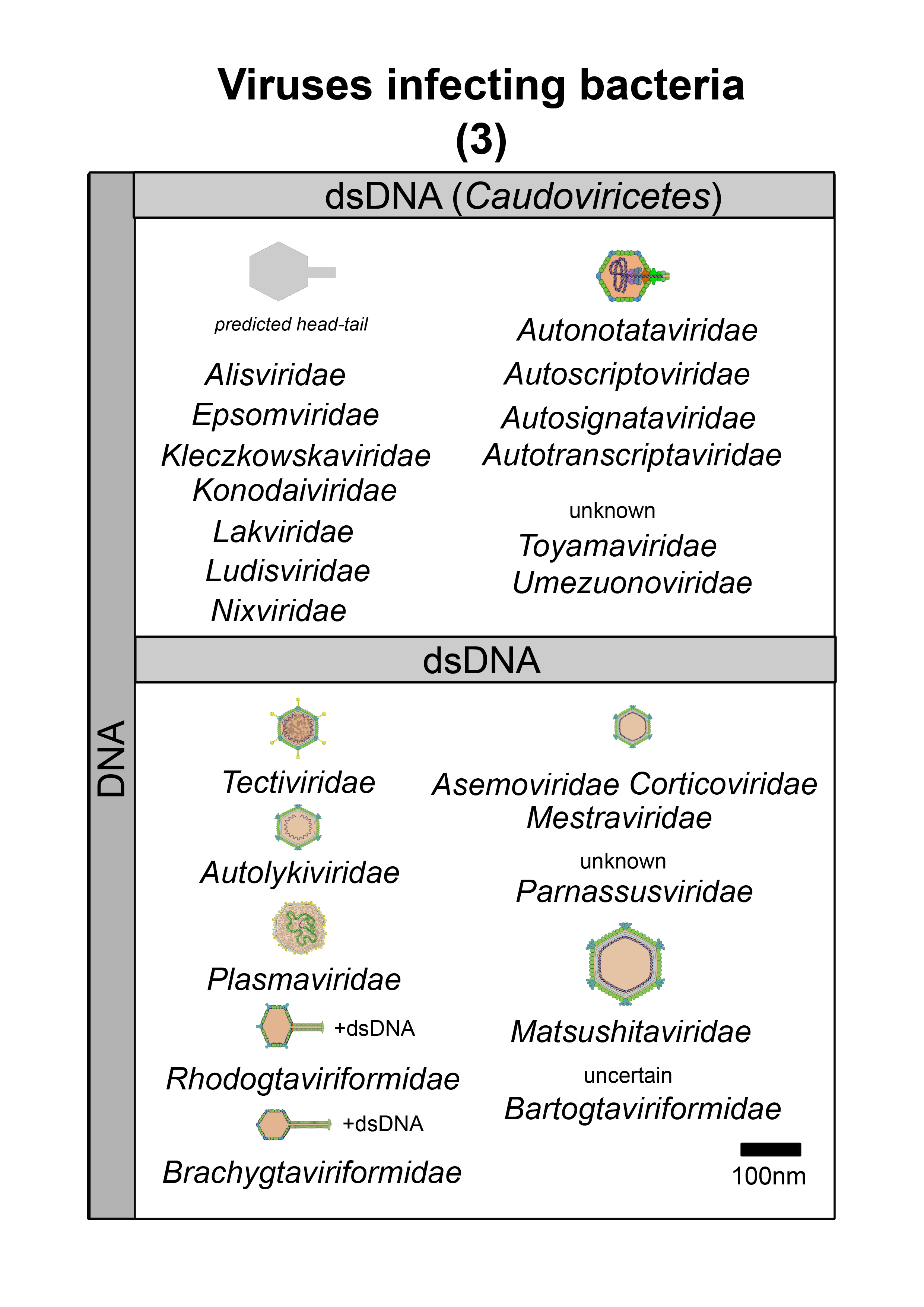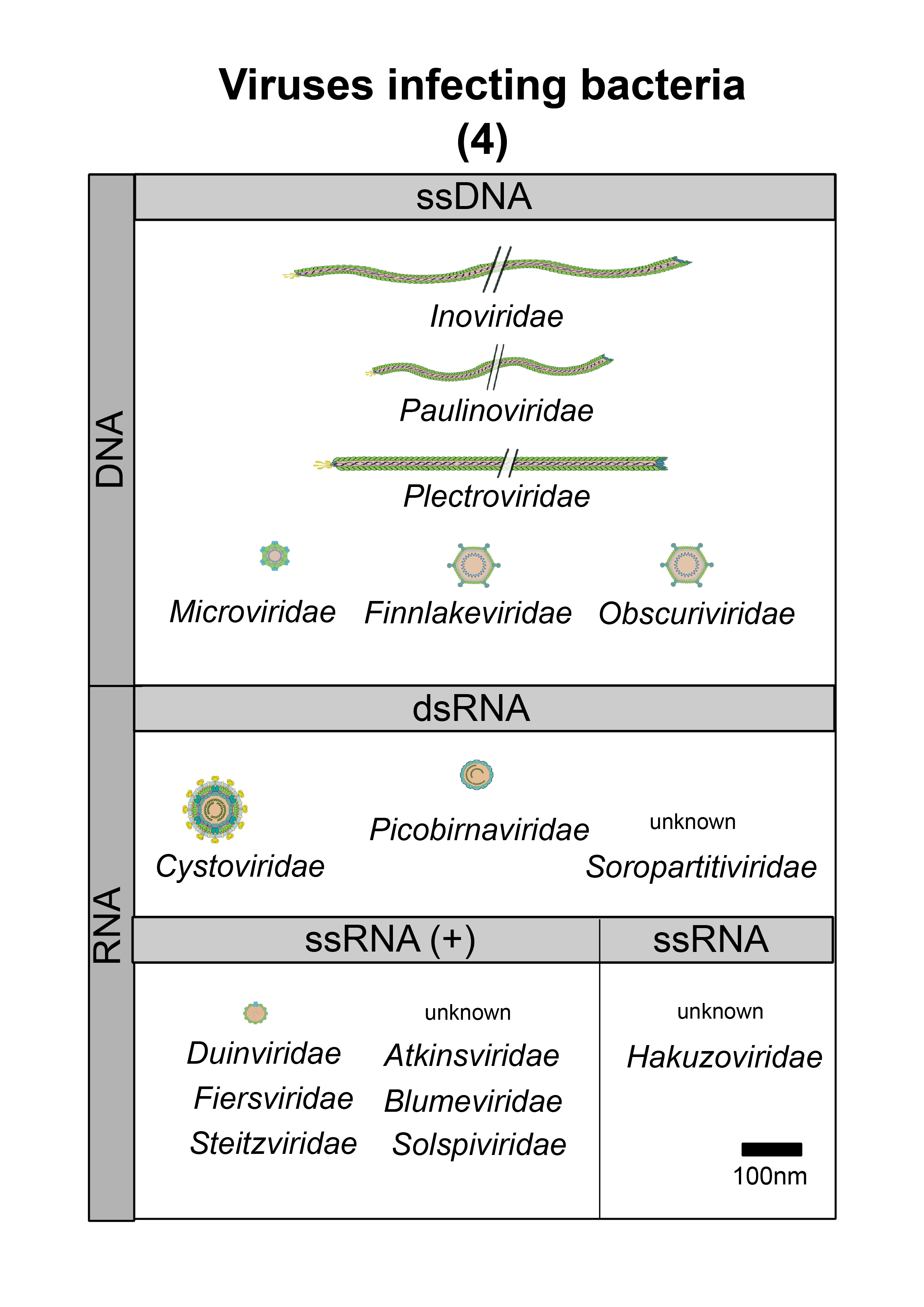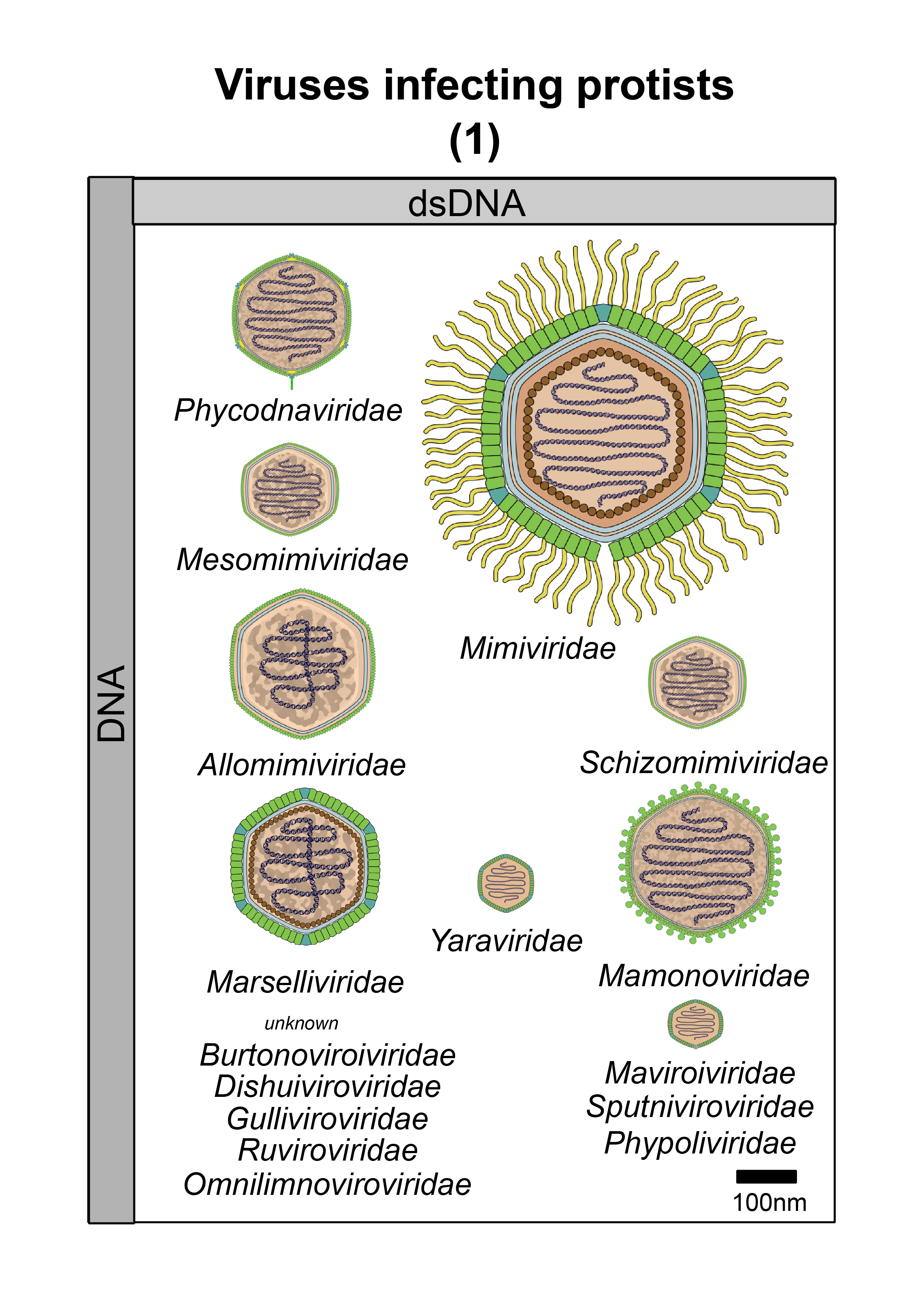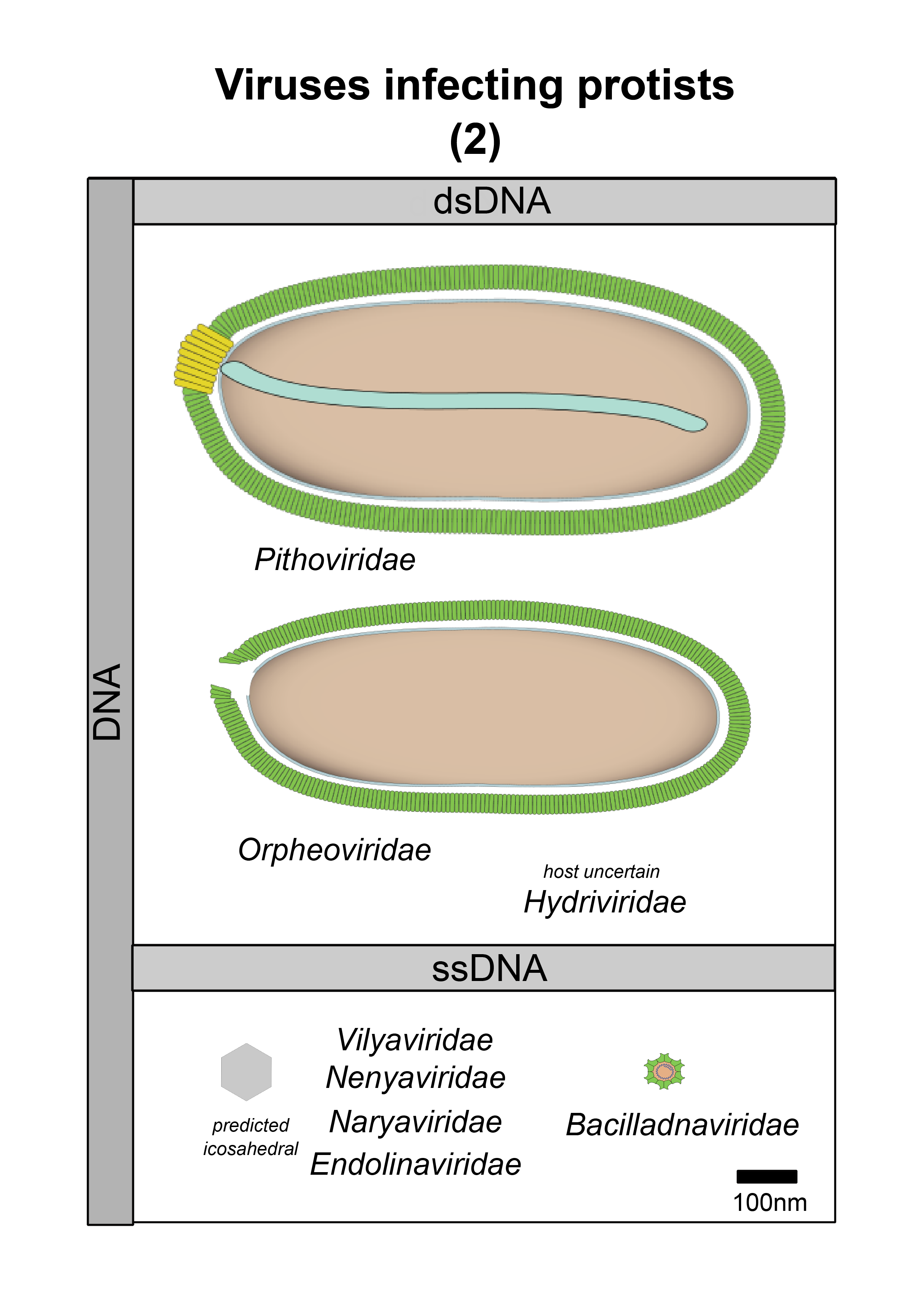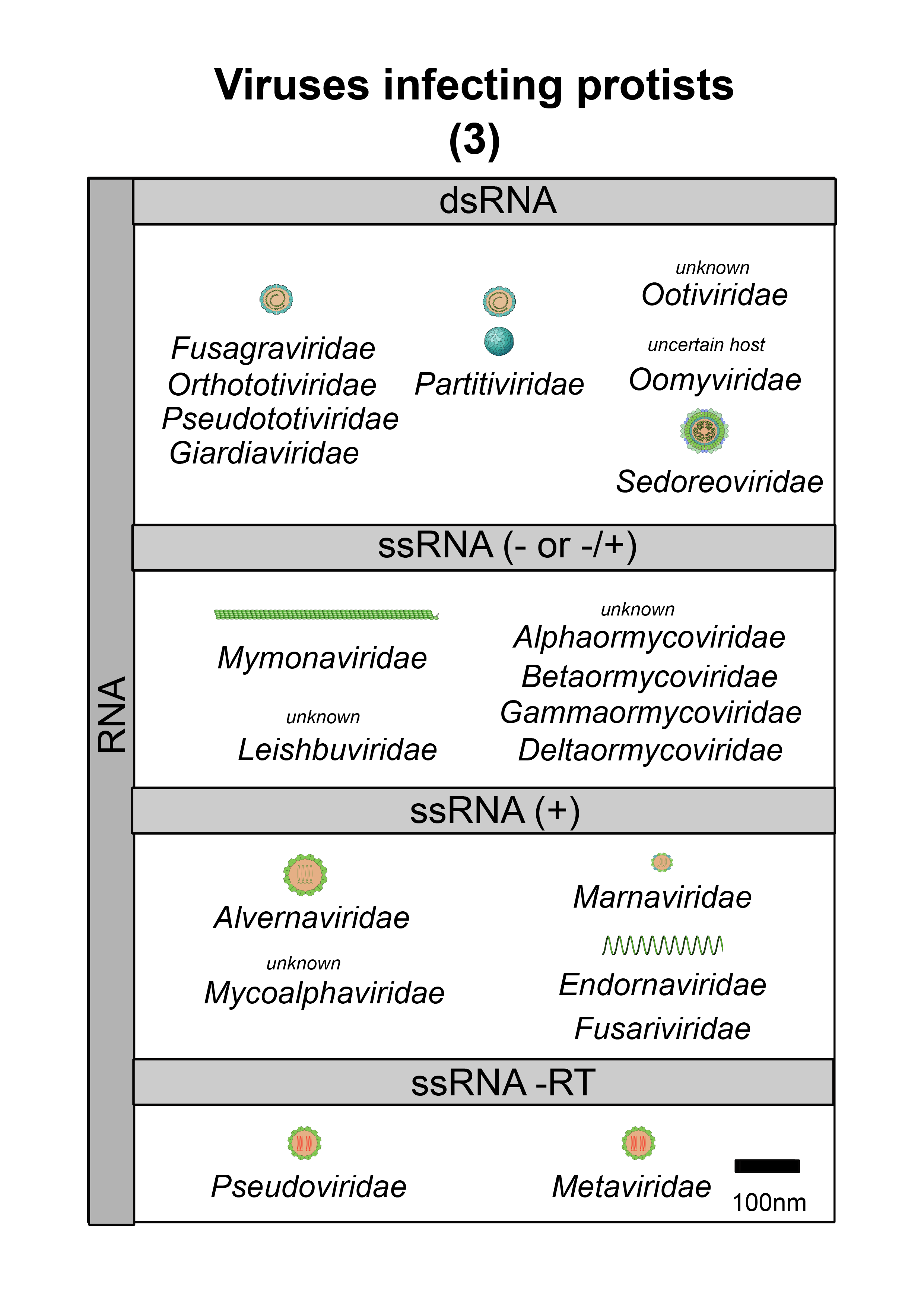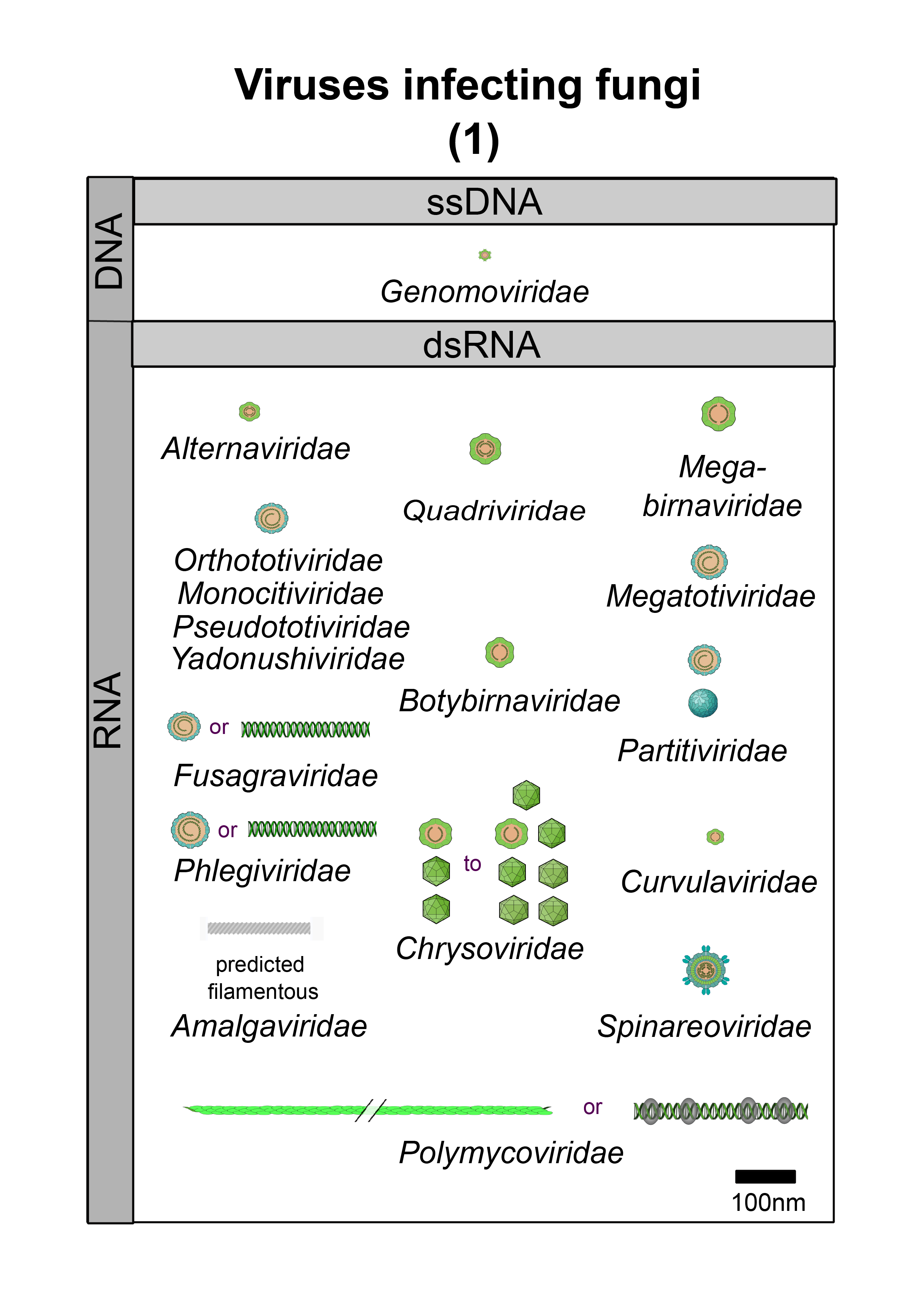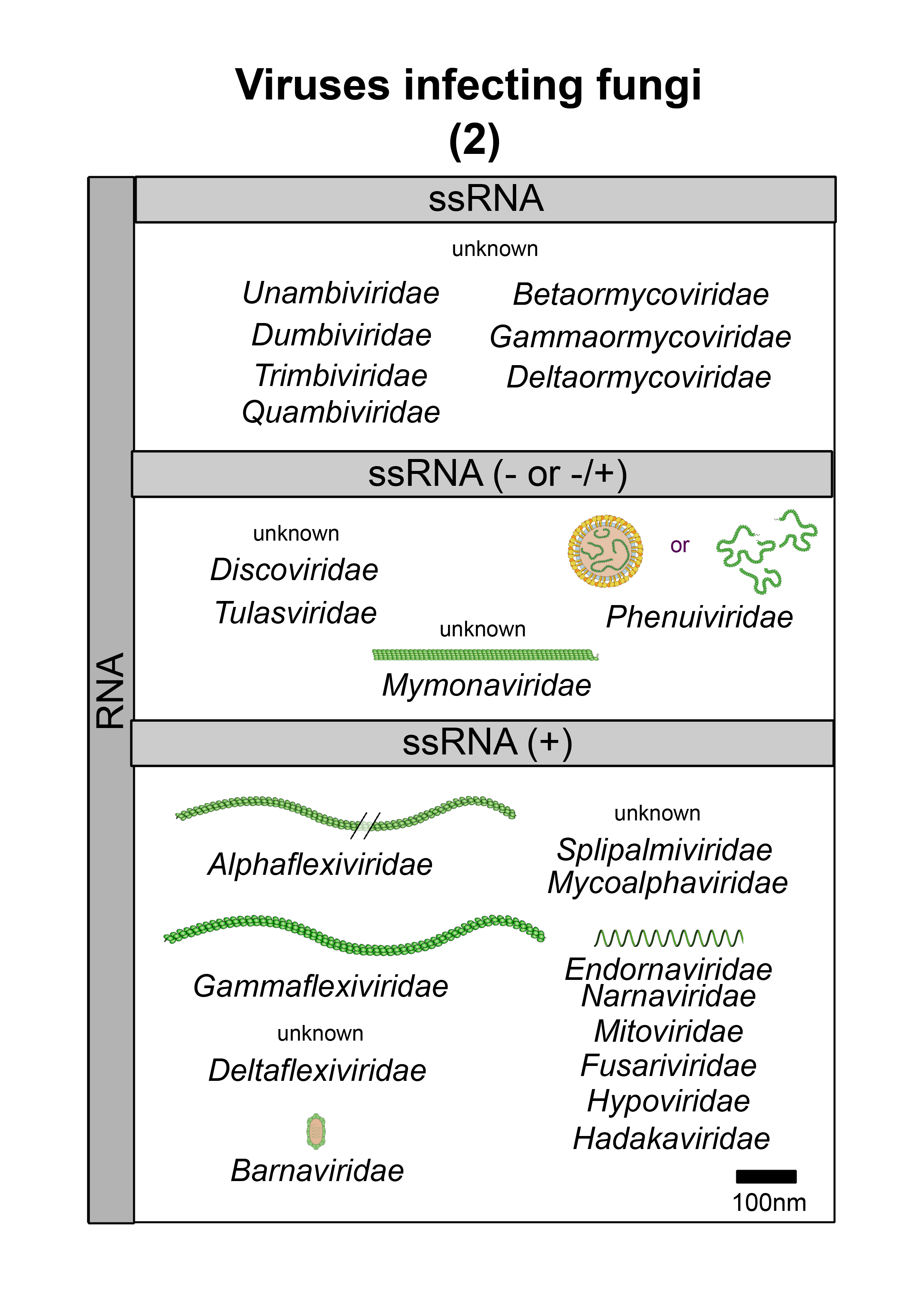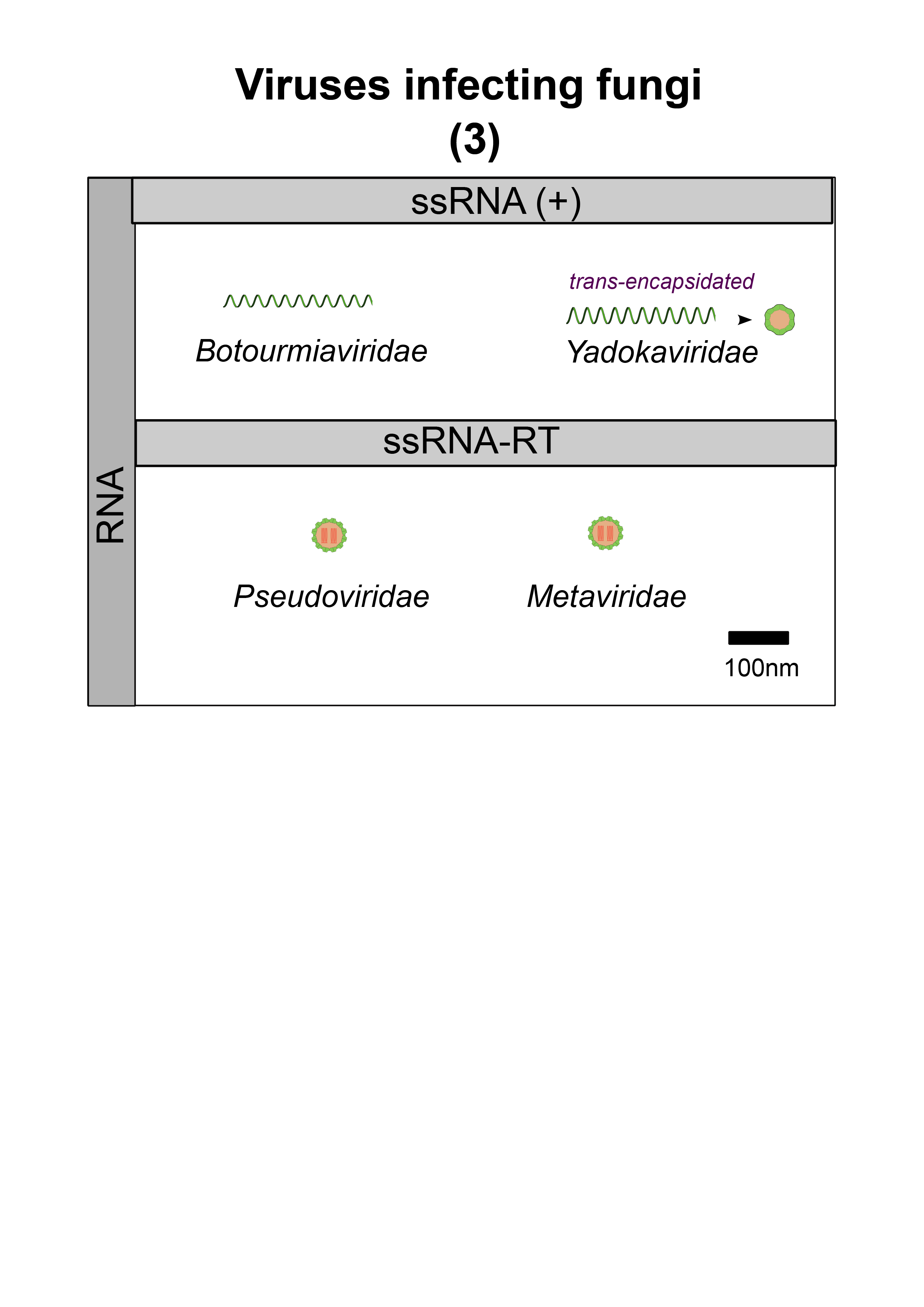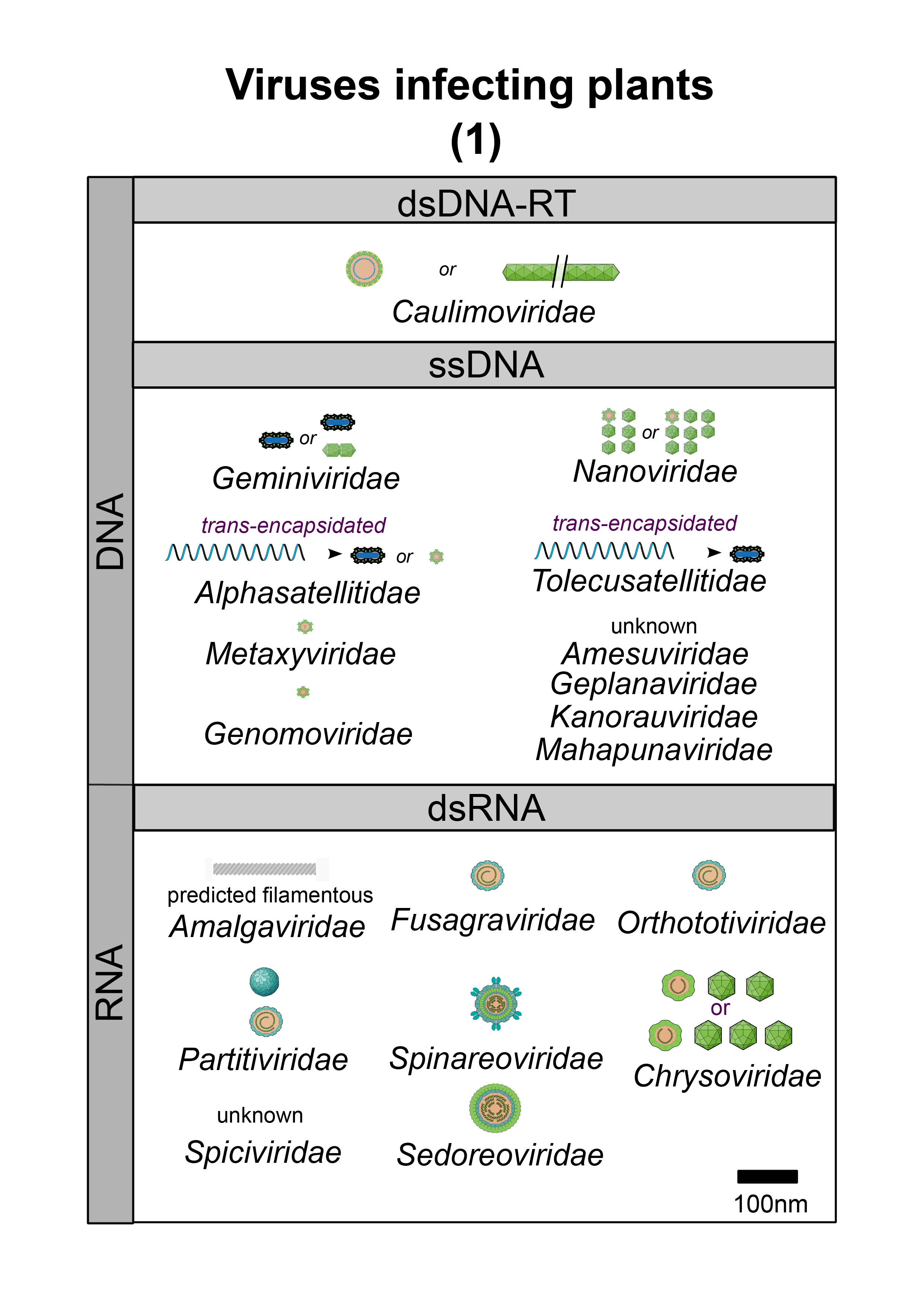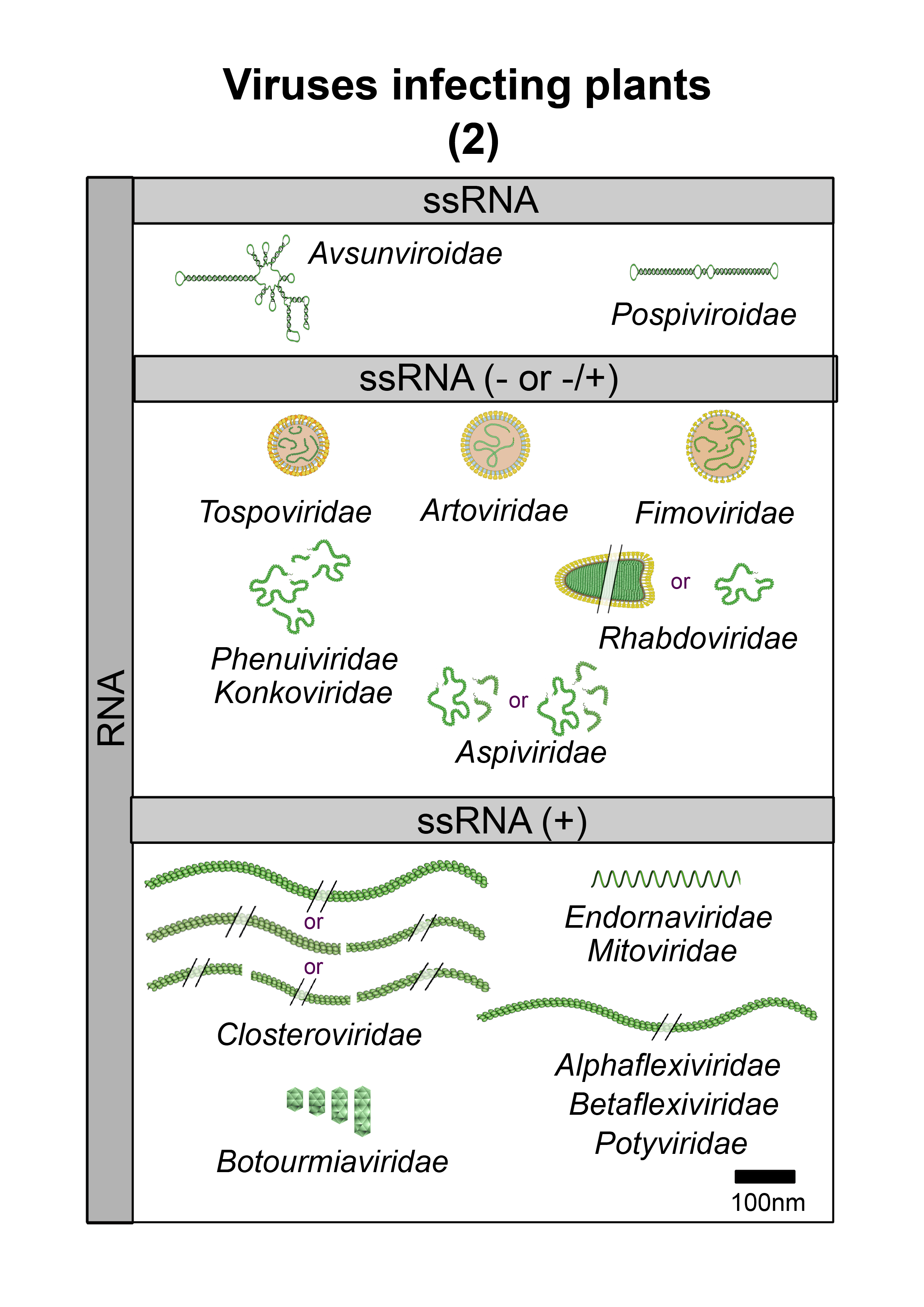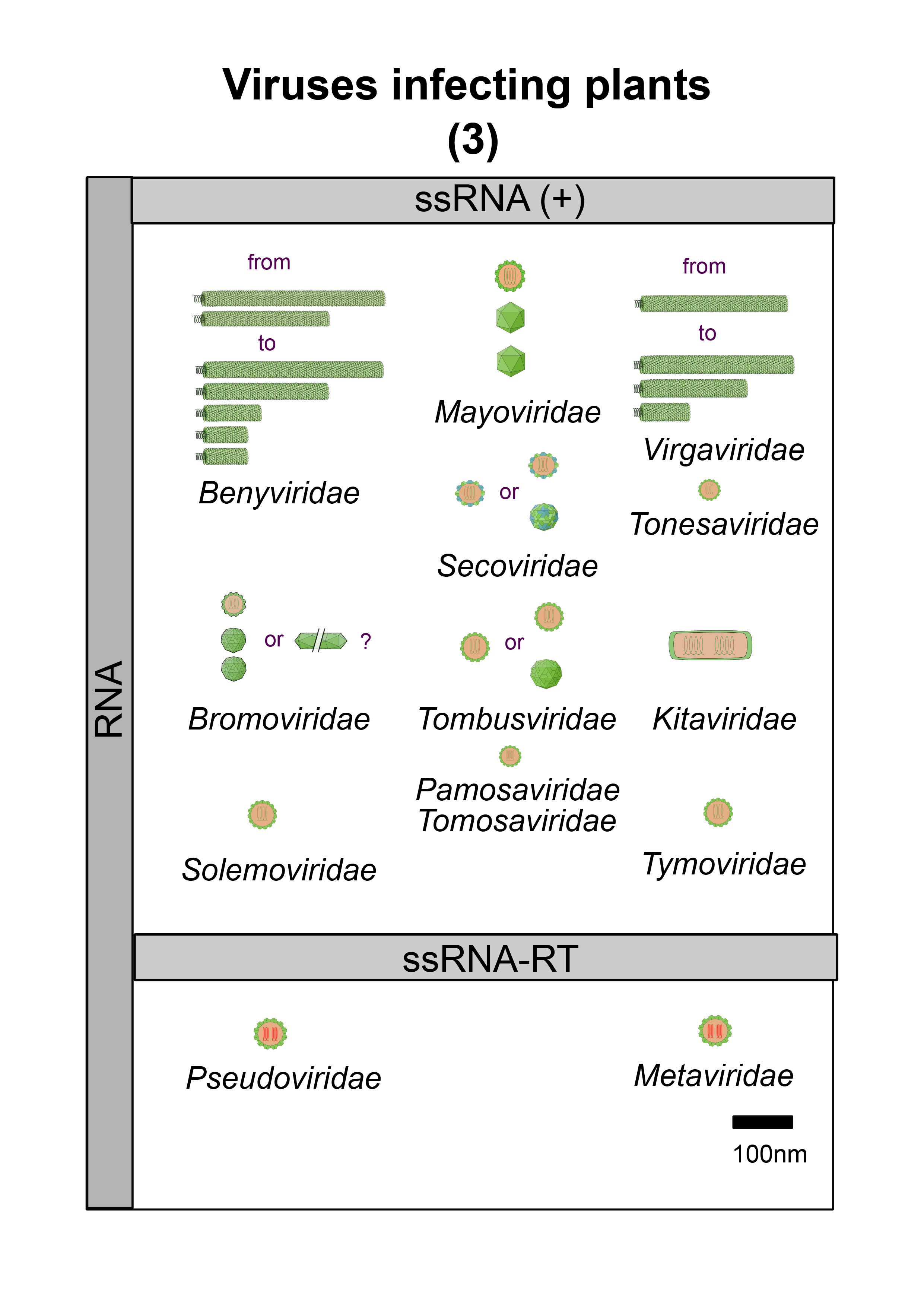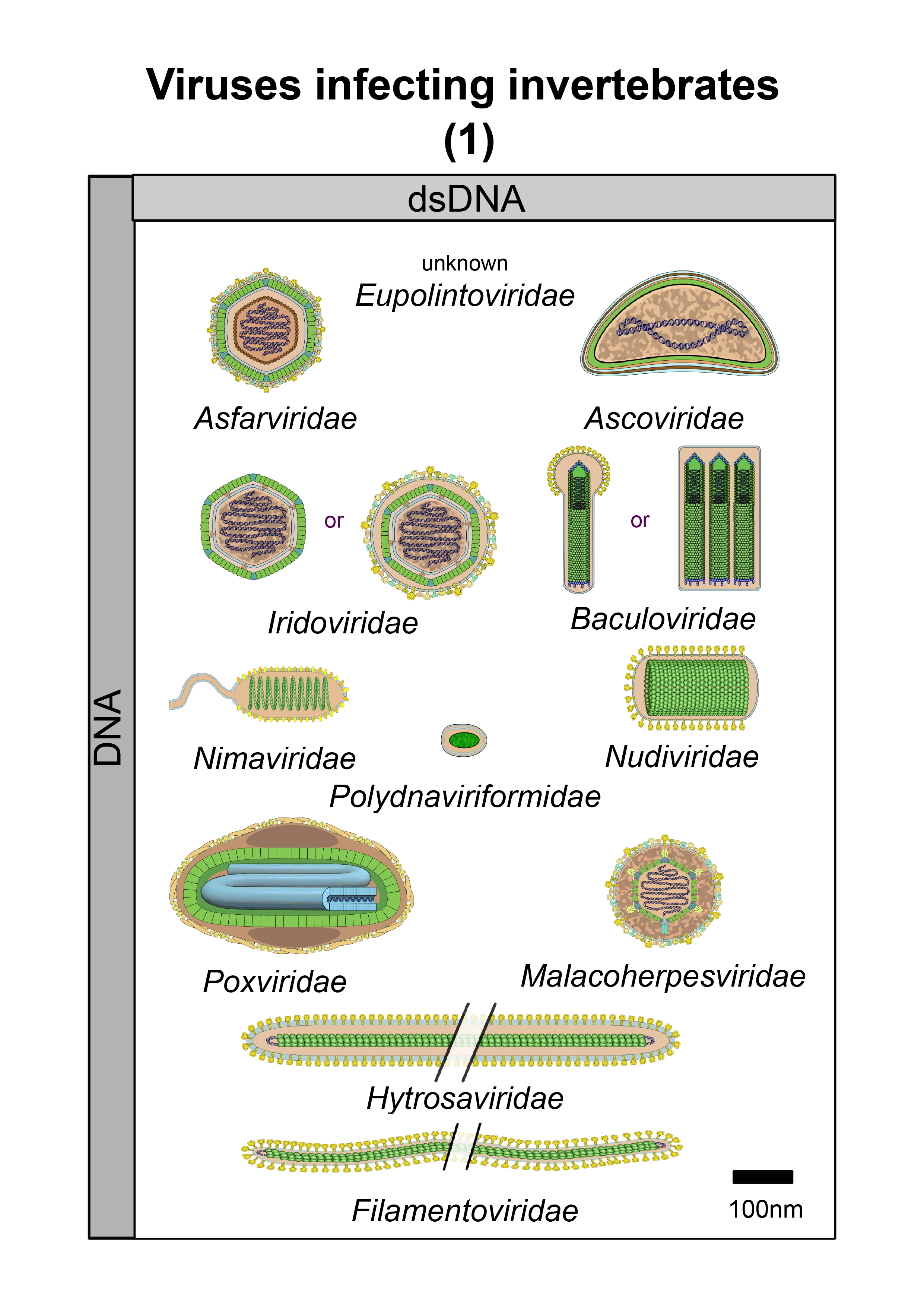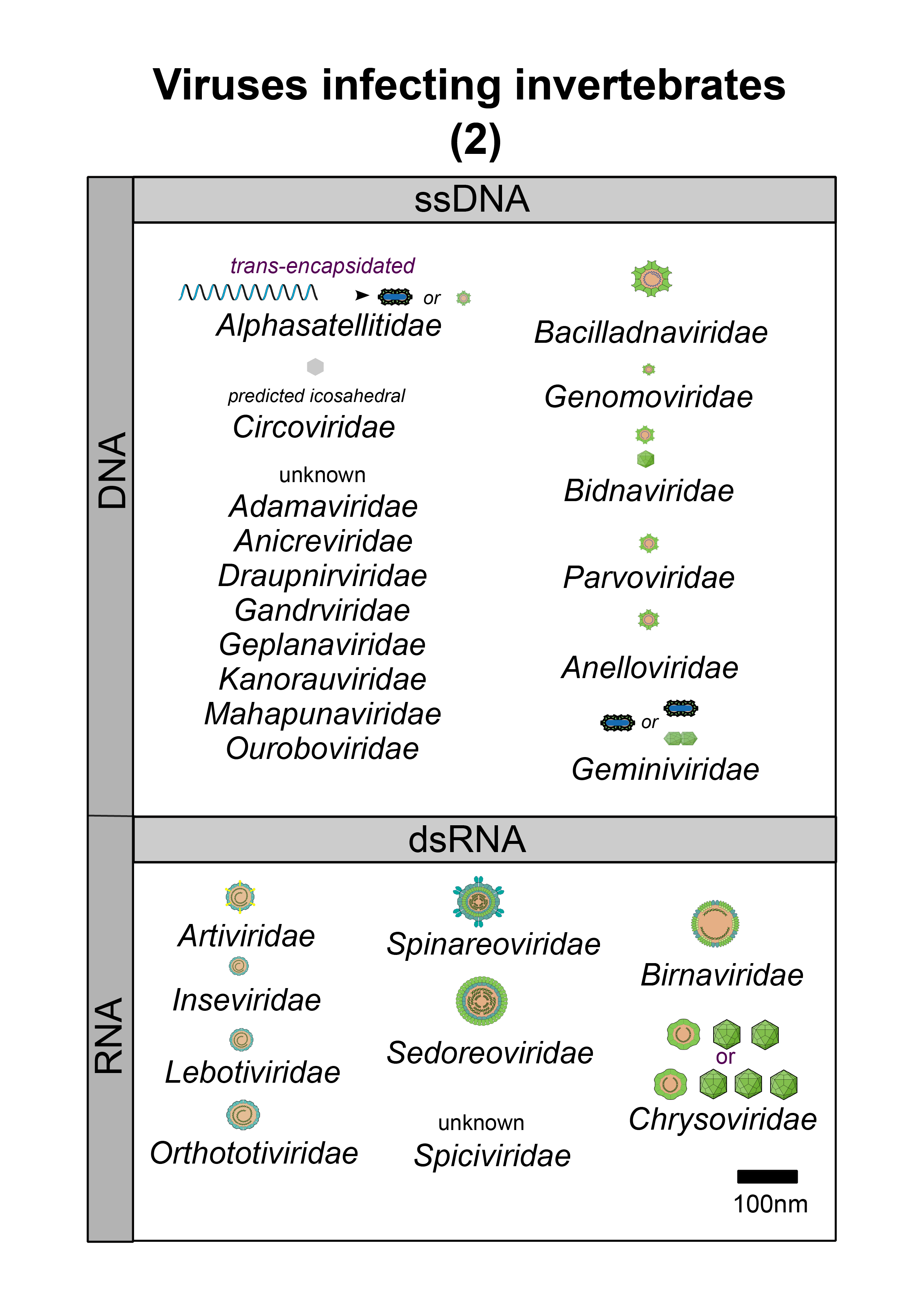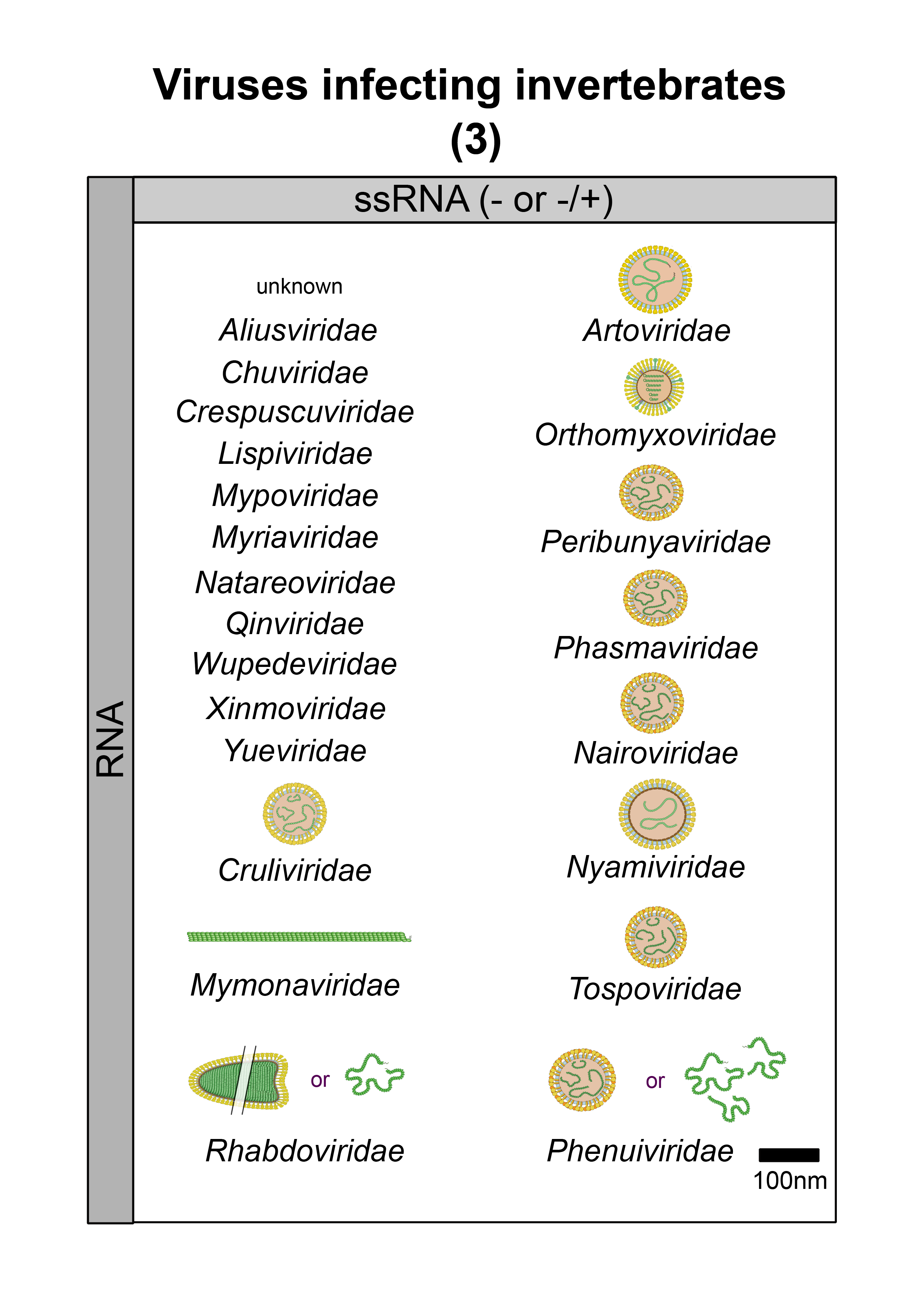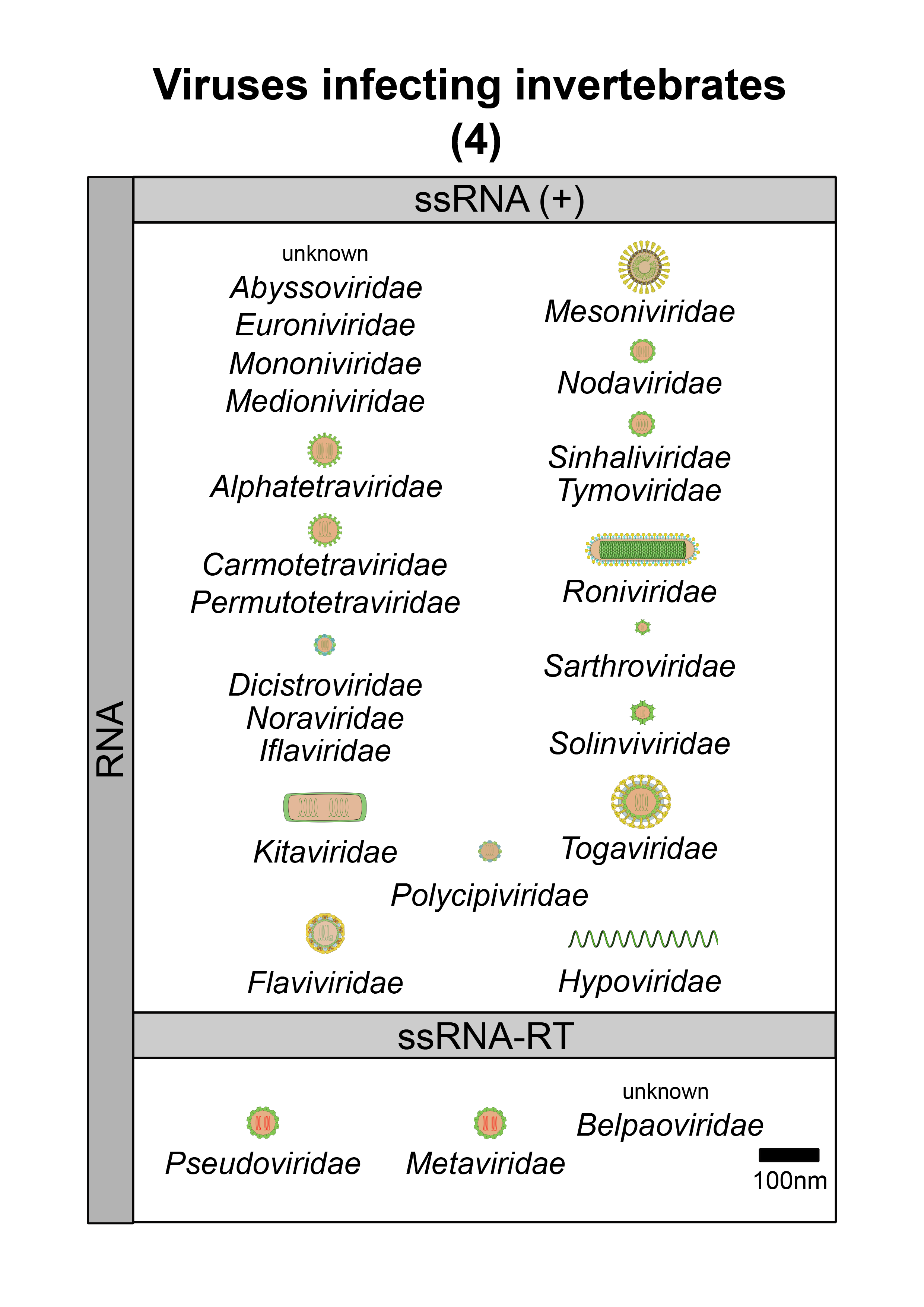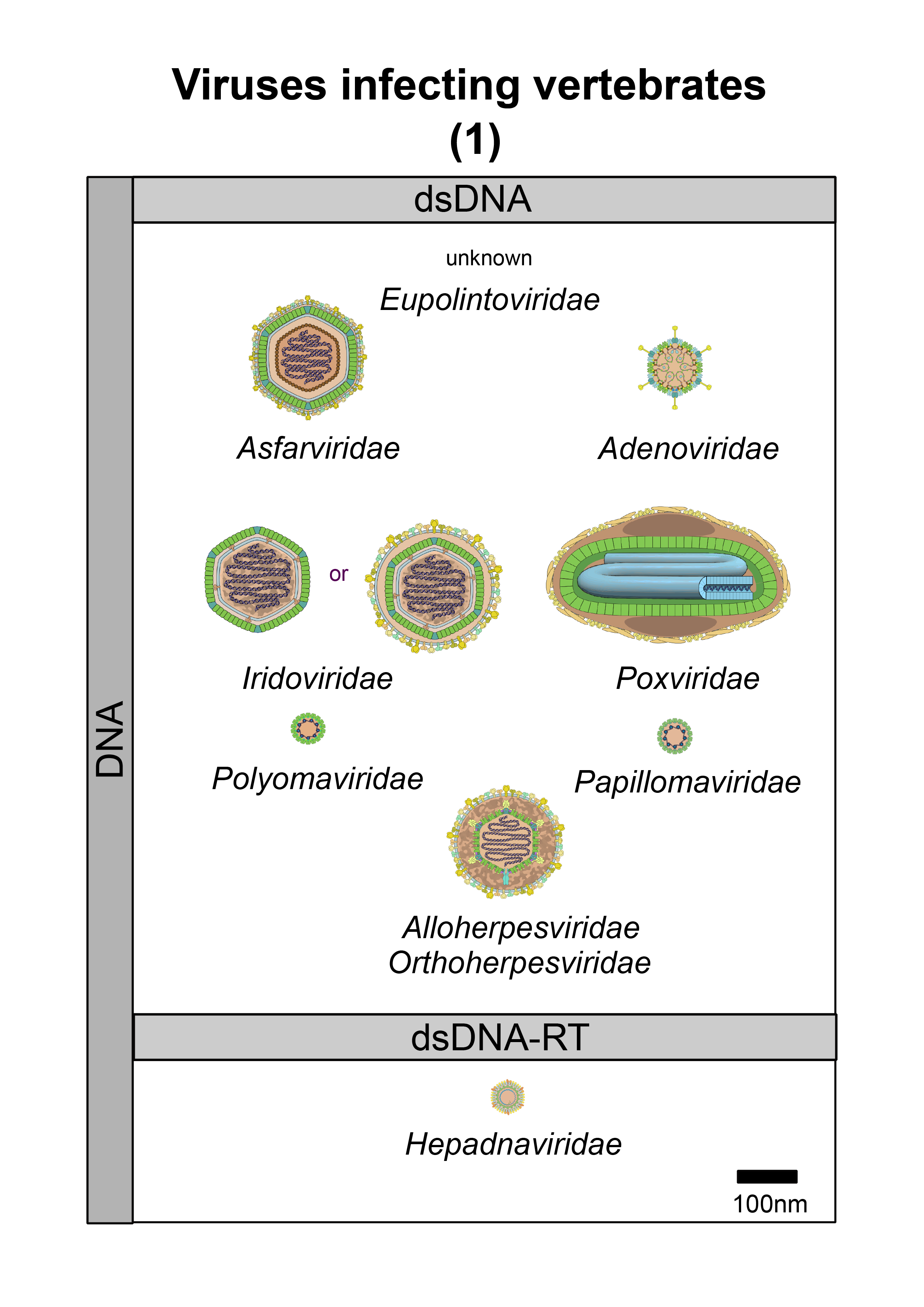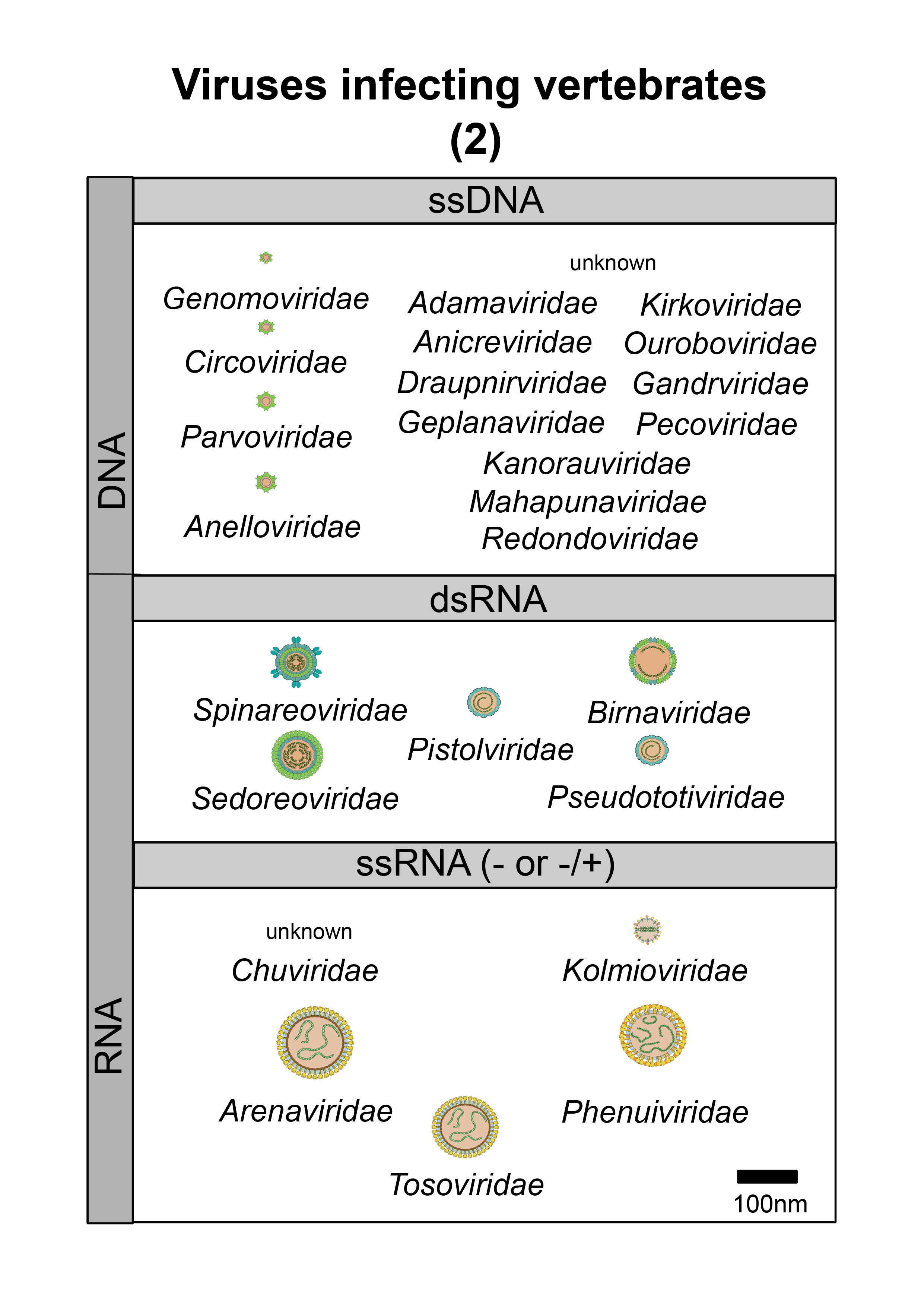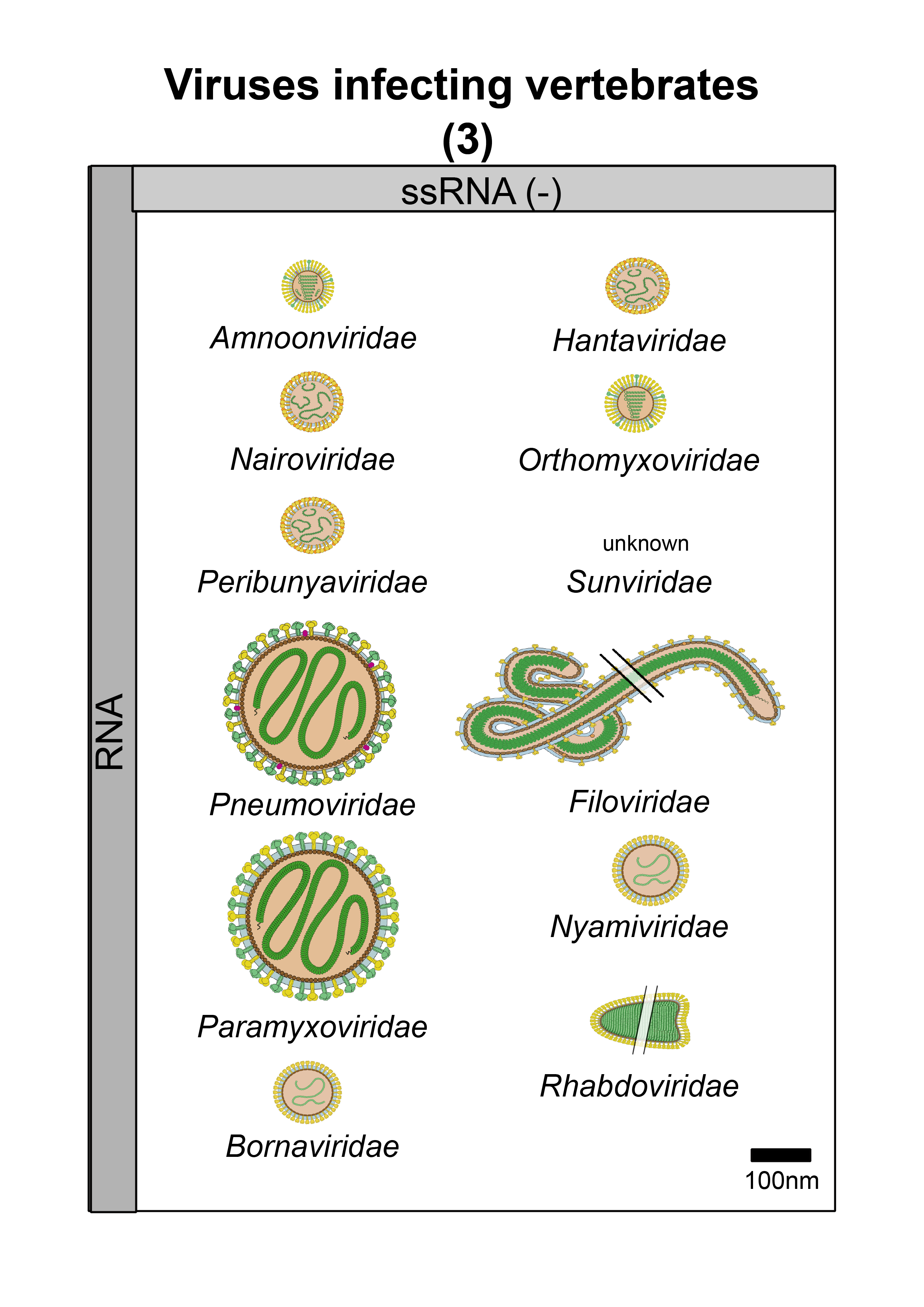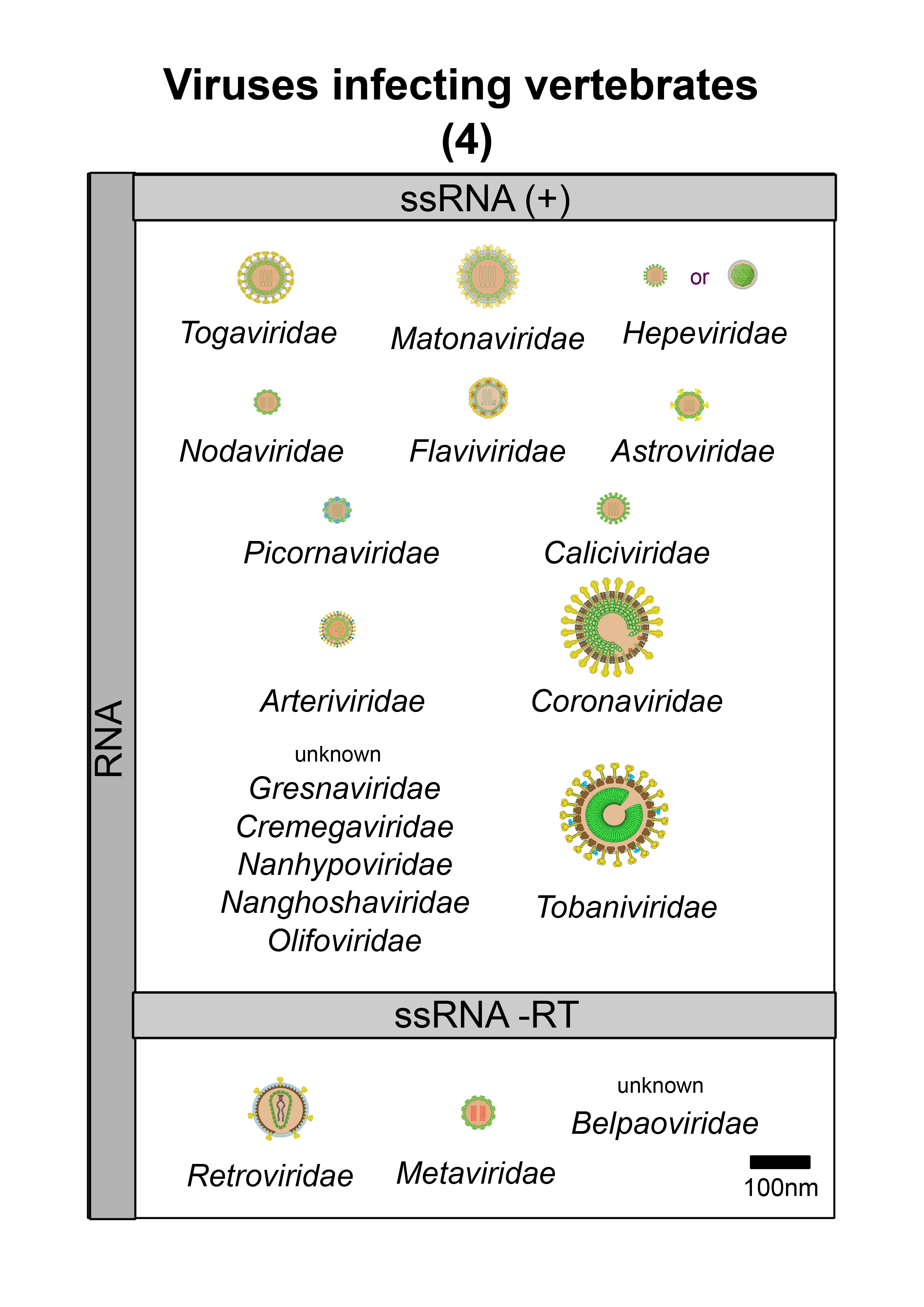Virion Diagrams
Select host category from the vertical buttons
and virion image page from the horizontal tabs
These diagrams of virion morphology are arranged by host and genome type at the family level and are intended to give an overview of the diversity of known forms. The schematics are approximately to scale. There are likely to be exceptions to the features shown within families, for example, in virion sizes and the number of genome segments. Also, hosts are uncertain for many viruses, especially those described by metagenomic analysis of environmental samples. For simplicity, head-tail viruses that infect archaea and bacteria are depicted without side tail fibres. Virus particles and structures of unknown or variable size are indicated by division slashes (//). Predicted morphologies are shown in grey. Viruses that do not have known extracellular particles are described as “capsidless” and are indicated by single-strand or double-strand nucleic acid icons. The term protist (as a host) is used to mean any eukaryotic organism that is not an animal, plant or fungus.
Many virus diagrams are taken from, or adapted from, the copyrighted ViralZone image library (ViralZone, SIB, Swiss Institute of Bioinformatics, https://viralzone.expasy.org) (Hulo et al., 2011) and are made available under a Creative Commons Attribution 4.0 International License. This contribution is gratefully acknowledged.
1. Hulo C, de Castro E, Masson P, Bougueleret L, Bairoch A, Xenarios I, Le Mercier P. ViralZone: a knowledge resource to understand virus diversity. Nucleic Acids Res. 2011 Jan;39(Database issue):D576-82. doi: 10.1093/nar/gkq901. Epub 2010 Oct 14. PMID: 20947564; PMCID: PMC3013774.).
